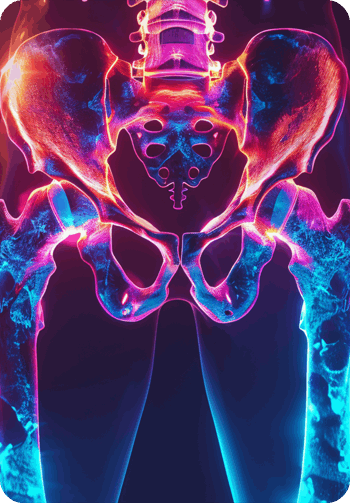Hip pain is a common issue for active individuals, often affecting their participation in sports, exercise, and daily activities. Persistent discomfort may indicate underlying problems, as the hip joint experiences significant stress during physical activity. Understanding the causes of hip pain and exploring evidence-based treatments can help you work with healthcare providers to create an effective management plan.
Injuries and Hip Pain
Sports injuries are a common cause of hip pain, especially in active individuals. One frequent issue is hip flexor strains, which occur when the muscles at the front of the hip overstretch. This is common among runners, soccer players, and dancers, causing pain in the front of the hip or groin, especially during movement.
Hamstring strains are another injury that can lead to hip pain. These injuries affect the muscles connected near the hip joint and often cause discomfort that radiates throughout the area. They are particularly common in activities requiring sudden bursts of movement.
Other common hip injuries include labral tears and hip bursitis. Labral tears are often caused by twisting or repetitive movements, leading to deep hip pain, stiffness, and clicking sensations. Hip bursitis occurs when the fluid-filled sacs around the joint become inflamed, affecting mobility and performance.
Arthritis and Joint Degeneration
Arthritis is a common reason for hip pain, especially in older adults, active individuals, or those with past joint injuries. The most common type, osteoarthritis, happens when the cartilage in the hip joint wears down over time. This can be caused by aging, previous injuries, or genetics. High-impact activities, like certain sports, can also speed up cartilage wear in active people.
Early signs of hip osteoarthritis include feeling stiff after sitting, experiencing pain during activities like walking or standing, and noticing a reduced range of motion. If you don’t treat it early, the pain can worsen, becoming constant and even disrupting sleep. Identifying these symptoms early helps manage the condition and protect your joints.
Other types of arthritis, like rheumatoid arthritis, also affect the hip. These autoimmune conditions trigger inflammation, causing pain, swelling, and potential joint damage. Early diagnosis and treatment reduce inflammation, relieve symptoms, and prevent further joint damage.
Sciatica and Nerve-Related Pain
Sciatica happens when the sciatic nerve is compressed or irritated. This often causes pain starting in the lower back and running through the hip and down the leg. In many cases, the pain is felt strongly in the hip. One common cause of this nerve compression is a herniated disc in the lower back. This can press on the nerve roots, leading to pain, numbness, or tingling in the hip and leg.
Treatment and Professional Care
Treatment for hip pain depends on its cause, symptom severity, and individual factors. Initial steps often include rest and activity modification to reduce inflammation and allow healing. Physical therapy plays a key role, focusing on exercises to improve flexibility, correct muscle imbalances, and strengthen the hip. For more severe cases, treatments like anti-inflammatory medications, corticosteroid injections, or platelet-rich plasma therapy may be an option. In cases of significant joint damage, surgery may be recommended by an orthopedic specialist.
Find Pain Relief
Pain can disrupt your active lifestyle, but identifying the cause helps you find relief. A qualified healthcare professional evaluates persistent discomfort and recommends effective treatment strategies. Acting early improves outcomes and helps you return to your desired level of physical activity.









Leave a Reply